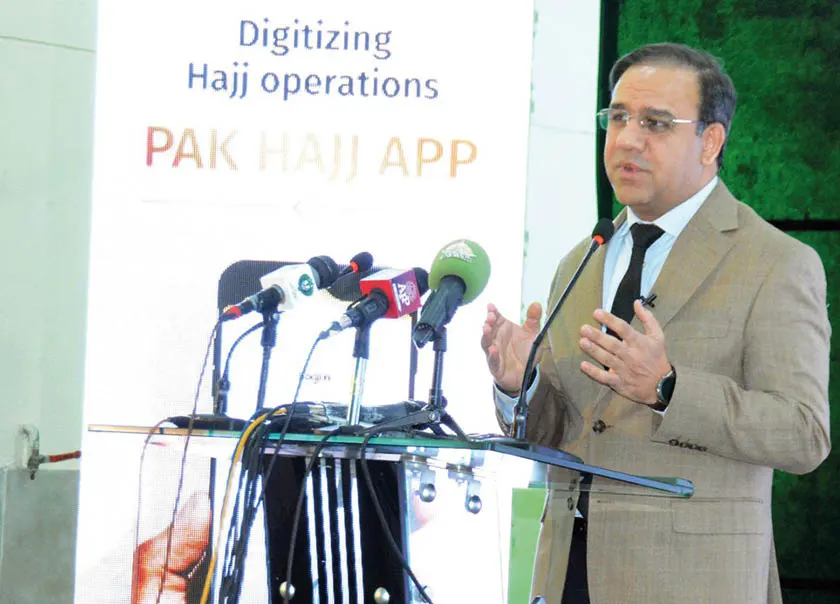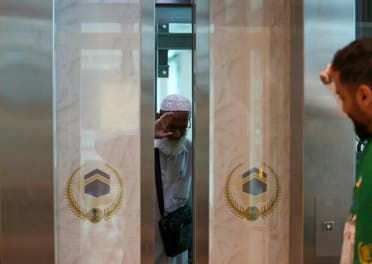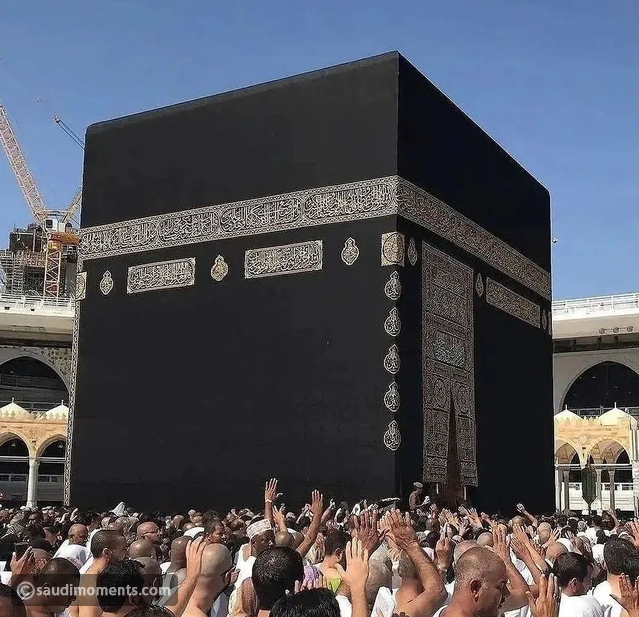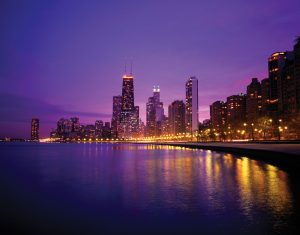In recent months, the world has been captivated by the ongoing developments surrounding the Hajj and Umrah pilgrimages in Saudi Arabia. As one of the most significant religious events in the Islamic calendar, the pilgrimage draws millions of Muslims from across the globe to perform their spiritual duties. This article explores the current state of the pilgrimage, focusing on the efforts of the Saudi government, the role of the New York Times (NYT) in reporting on these events, and the broader implications for global religious tourism.
The Pilgrim Experience Program: A Vision 2030 Initiative
The Pilgrim Experience Program, a key initiative under Saudi Arabia’s Vision 2030, has made remarkable strides in enhancing the experience for pilgrims and visitors. According to the program’s 2024 annual report, there was a 101% increase in arrivals compared to 2022, a testament to the Kingdom’s commitment to providing a seamless and spiritually fulfilling journey.
This growth is attributed to cross-sector integration and streamlined procedures that have significantly improved the efficiency of pilgrimage services. The report highlights that over 18.5 million pilgrims and Umrah performers arrived in 2024, with 16.92 million being Umrah performers—exceeding the year’s targets.
The success of the program is also reflected in the implementation of 89 initiatives involving more than 40 government entities, achieving a 95% compliance rate. These initiatives span all stages of the pilgrimage, including transport, rituals, and visits to historical and religious sites.
Dr. Tawfiq Al-Rabiah, the Minister of Hajj and Umrah, emphasized that serving pilgrims is a top priority for the Saudi leadership, aligning with the goals of Vision 2030.
Enhancing Visitor Satisfaction and Engagement

One of the most notable achievements of the Pilgrim Experience Program is the significant improvement in visitor satisfaction. The number of visitors to Al-Rawdah Al-Sharifah, a sacred site near the Kaaba, increased from 4 million in 2022 to 13 million in 2024. Visitor satisfaction also rose from 57% to 81%, reflecting the Kingdom’s dedication to improving service quality.
Volunteer engagement has also seen a dramatic increase, with more than 153,000 volunteers serving pilgrims in 2024, up from 15,000 in 2022. This reflects a growing culture of social participation and community support.
Internationally, the program led 33 overseas visits with public and private partners, addressing logistical challenges and expanding access for pilgrims. These efforts have helped open new routes, increase seat capacity, and ease travel for those making the journey.
Digital Innovations and Global Recognition

Saudi Arabia has embraced digital transformation to enhance the pilgrimage experience. The Nusuk platform, a key digital service, now offers over 100 services to streamline travel, booking, and pilgrimage arrangements. Additionally, the Makkah Route Initiative, launched in 2017, has served over one million pilgrims by streamlining immigration and pre-travel processes at 11 airports across seven countries.
The initiative has significantly reduced the burden on pilgrims, especially those traveling from regions like Malaysia, Indonesia, Pakistan, Bangladesh, Morocco, Turkey, and Côte d’Ivoire.
Globally, Makkah ranked fifth in international visitor numbers, while Madinah climbed to seventh in the global tourism performance index. This recognition reinforces Saudi Arabia’s position as a leading spiritual and cultural destination.
Recent Developments in the 2025 Hajj Season

As of Sunday, May 18, 554,579 pilgrims have arrived in the Kingdom of Saudi Arabia (KSA) to perform Haj for the Islamic year 1446 AH (2025). According to the Ministry of Haj and Umrah, these arrivals represent 39% of the total Haj visas issued for this season.
Pilgrims entered the Kingdom through air, land, and sea routes, with 538,766 arriving by land, 14,391 by air, and 1,422 by sea. The influx began on Dhul Qada 1 (April 29), marking the formal start of Haj activities in Makkah and Madinah.
The Ministry of Haj and Umrah extended a warm welcome to pilgrims, stating: “Welcome, O Guests of Allah — your arrival is an honour and a joy for us.” Authorities reiterated the importance of obtaining an official Haj permit, which is essential for accessing services, ensuring safety, and facilitating a comfortable and spiritually enriching experience.
Challenges and Safety Measures

Despite the progress, the Hajj remains a complex and challenging event. With over 1.5 million foreign pilgrims currently in Saudi Arabia, the Kingdom continues to face the daunting task of managing large crowds and ensuring the safety of all participants.
One of the greatest challenges in recent years has been the extreme heat, with temperatures exceeding 40°C (104°F) in some areas. To address this, the Health Minister, Fahad bin Abdulrahman Al-Jalajel, revealed that 10,000 trees have been planted to provide additional shade. Hospital capacities have also been greatly increased, with the number of paramedics and medical professionals tripling.
The Role of the New York Times in Reporting on Pilgrims in Saudi Arabia
The New York Times (NYT) has played a crucial role in covering the pilgrimage and its impact on both the local and global stage. As a leading international news source, the NYT provides in-depth analysis of the logistical, cultural, and religious aspects of the Hajj.
Recent coverage has highlighted the efforts of the Saudi government to improve the pilgrimage experience, including the use of technology, volunteer programs, and infrastructure development. The NYT has also reported on the challenges faced by pilgrims, such as the extreme heat and crowd management issues.
Additionally, the newspaper has provided insights into the historical and spiritual significance of the Hajj, emphasizing its role in unifying Muslims around the world. Through its reporting, the NYT helps to inform a global audience about the complexities and importance of this sacred journey.
Conclusion: The Future of Pilgrimage in Saudi Arabia
The pilgrimage to Saudi Arabia remains a cornerstone of Islamic faith and a symbol of unity among Muslims worldwide. With the continued efforts of the Saudi government and the support of international media like the New York Times, the experience for pilgrims is becoming increasingly accessible, safe, and meaningful.
As Saudi Arabia moves forward with Vision 2030, the focus on improving the pilgrimage experience will likely remain a top priority. The success of the Pilgrim Experience Program demonstrates the Kingdom’s commitment to innovation, inclusivity, and excellence in serving the global Muslim community.
For those interested in staying updated on the latest developments, the New York Times and other reputable sources continue to provide valuable insights into the evolving landscape of pilgrimage in Saudi Arabia.
Author: Sarah Thompson
Title/Role: Senior Religion Correspondent
Credentials: With over a decade of experience covering global religious events, Sarah has reported extensively on the Hajj, Umrah, and the role of faith in international politics. She holds a Master’s degree in Journalism from Columbia University and has contributed to major publications including The Washington Post and BBC World Service.
Profile Link: Sarah Thompson Profile
Sources:
– Saudi Ministry of Hajj and Umrah
– New York Times – Pilgrimage Coverage
– Vision 2030 Official Website
Internal Links:
– Understanding the Five Pillars of Islam
– The History of Hajj in Saudi Arabia
– Global Trends in Religious Tourism
Call to Action: Stay updated with the latest news on pilgrims in Saudi Arabia and how it impacts global religious practices. Explore today’s headlines to learn more about this historic and spiritual journey.











More Stories
How to Unscramble the Word ‘Rehlba’ and Find Its Meaning
What Is Trick Or Treat Street? A Guide to the Popular Halloween Tradition
US Trending News: The Fascinating World of Songbirds